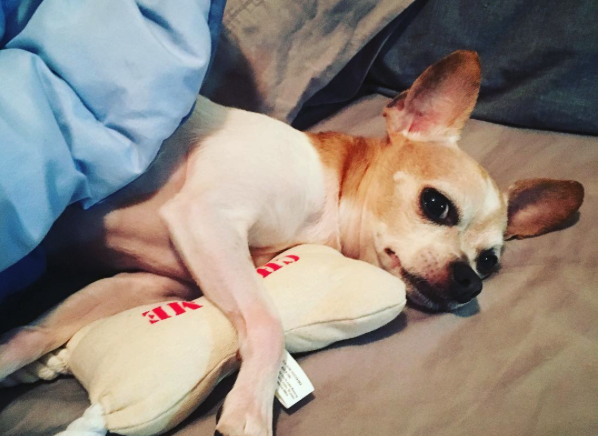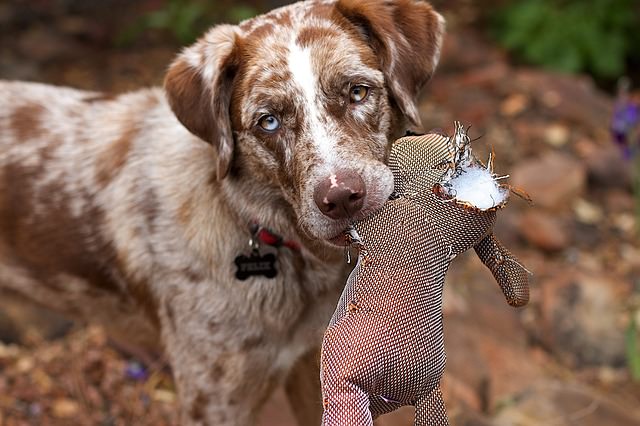We all delight in watching our dogs play and some dogs have specific ways of interacting with their toys. Sometimes this will include tearing the toy completely apart and rendering the squeaker ineffective. Many dogs seem bent on removing the squeaker as if they want it to stop.
We know when we play with our dogs the squeaking sound seems to really fire up the play. Some dogs seem to be very excited by the sound and this could be because prey animals make distress sounds. Your dog is driven at an instinctive level by the sound that mimics prey.

All the senses play a role in feeding for animals. We know that sound plays a role for animals in predation: hunting and apprehension of prey. The dynamics of hunting for animals have been defined over time through evolution. Because feeding is essential to survival, animals must be instinctively tuned in to these cues. Over time, these survival traits have become hard wired in to a dog’s very existence, but since we provide for our dog’s basic needs, we see them manifested in play.
The sound that a prey animal makes can spur the hunter to act on his prey drive. As long as the sound continues, the prey appears to live and the dog is driven to kill. We have found that in many species the drive to hunt is separate from actual hunger. A study looked at domestic cats, who would leave a bowl of enticing food in order to attack and kill a passing prey animal.¹ Our dogs attack their toys in a similar fashion, very separate from their hunger, but seem likewise driven to the “kill” which would occur when the prey no longer vocalized.

Although our dogs have evolved in tandem with humans for a long time, there are still vestiges of were they came from that we can marvel at. Do not be fooled into believing that your dog IS a wolf however. These companions of ours are almost custom made to be our best friends!
- Adamec, RE (1976)The Interaction of Hunger and Preying in Domestic Cats (felis catus): An Adaptive Hierachy? Behavioral Biology, 263-27

